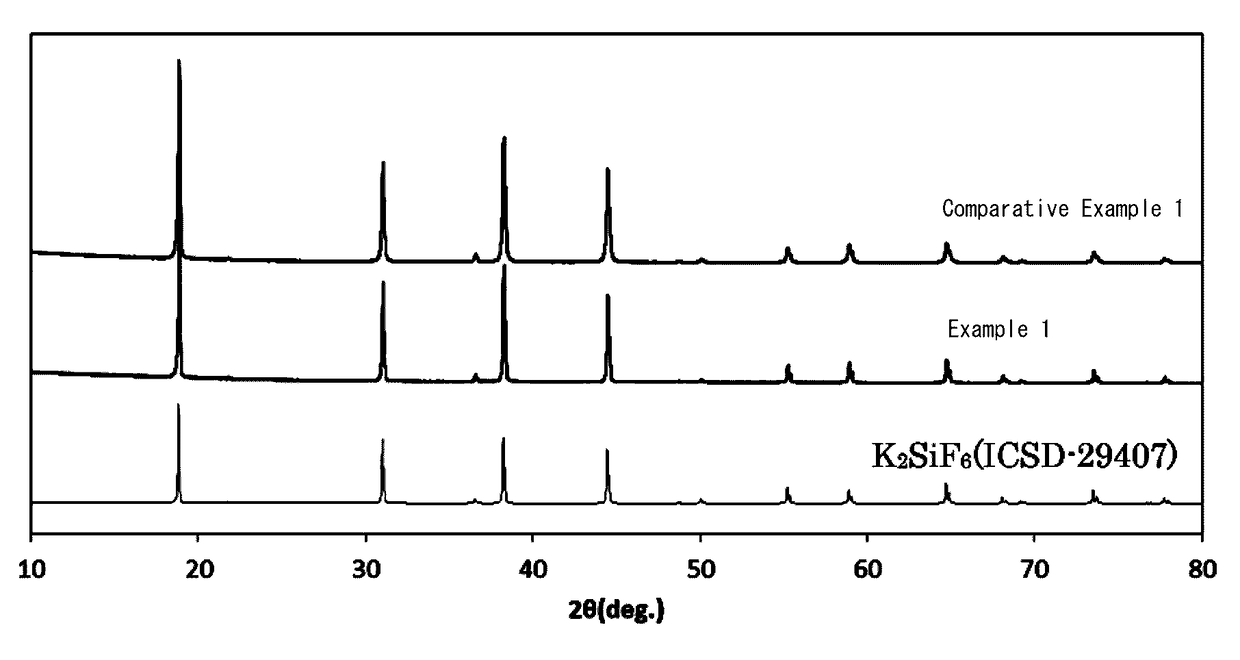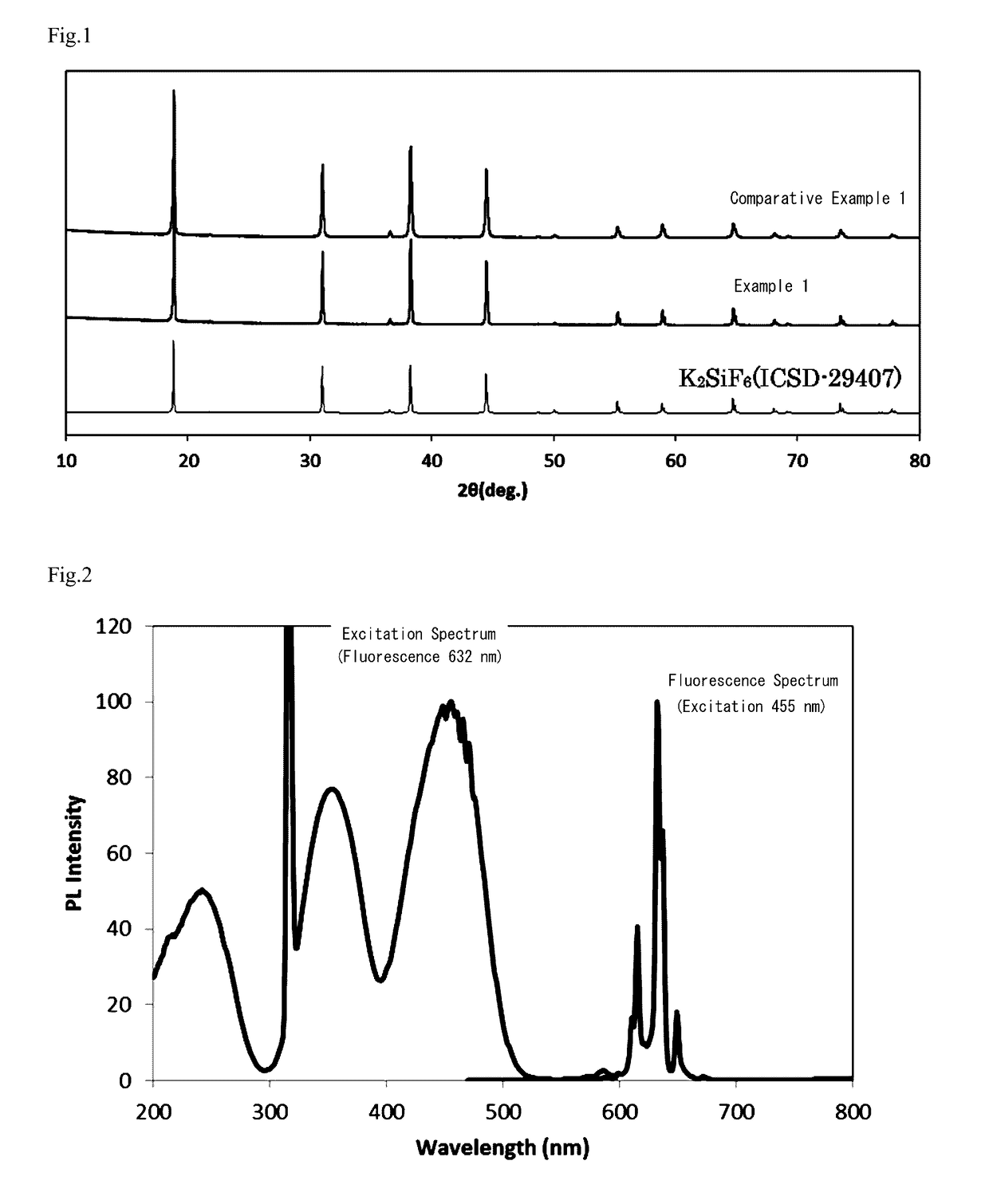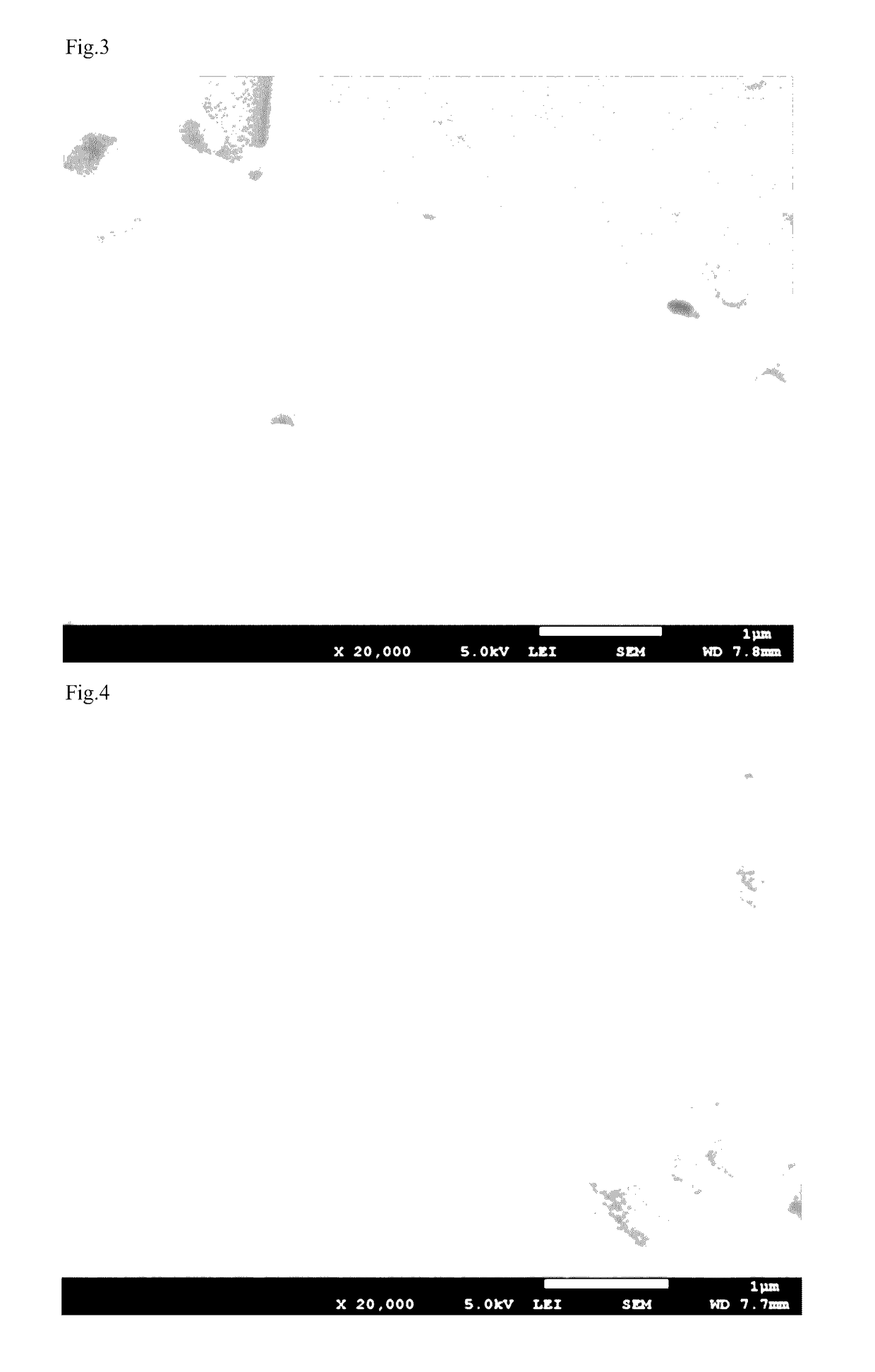Phosphor, light emitting element, and light emitting device
a light emitting element and phosphor technology, applied in the direction of semiconductor devices, luminescent compositions, chemistry apparatus and processes, etc., can solve the problems of difficulty in achieving high luminance and poor color rendering properties of white leds, and achieve high color rendering properties and color reproducibility, superior moisture resistance, and long life span
- Summary
- Abstract
- Description
- Claims
- Application Information
AI Technical Summary
Benefits of technology
Problems solved by technology
Method used
Image
Examples
example 1
[0071]20 g of the phosphor of Comparative Example 1 were added to 100 ml of a mixed solution (volume ratio 1:1) of hydrofluoric acid having a concentration of 20% and methanol to prepare a suspension.
[0072]While stirring this suspension, 25 ml of an aqueous solution of calcium chloride having a concentration of 0.6 mol % were added. After addition, the suspension was further stirred for 10 minutes. After the stirring ended, the suspension was let stand to allow the phosphor to settle, and the operation of removing the supernatant, adding methanol thereto, stirring and allowing to stand, then removing the supernatant and further adding methanol was repeated until the solution became neutral.
[0073]Thereafter, the precipitated particles were recovered by filtration, and further dried to completely remove the methanol by evaporation, resulting in the phosphor of Example 1.
examples 2 to 4
[0074]Examples 2, 3 and 4 were produced using entirely the same methods and conditions as Example 1, except that the concentration of the aqueous solution of calcium chloride added to the phosphor suspension was changed respectively to 0.3 mol %, 0.8 mol % and 1.2 mol %.
examples 5 to 8
[0075]Examples 5 to 8 were produced using entirely the same methods and conditions as Example 1, except that the concentration of the aqueous solution of calcium chloride added to the phosphor suspension was changed respectively to 0.7 mol %, 0.2 mol %, 0.5 mol % and 1.4 mol %.
[0076]Next, the resulting phosphors were evaluated by the following method.
[0077]First, the phosphors of Comparative Example 1 and Examples 1 to 4 were evaluated as to their crystal phases, excitation spectrum / fluorescence spectrum, quantum efficiency, chromaticity coordinates, atomic composition ratio Ca / (K+Ca), surface structure and moisture resistance. The evaluation results are shown in Table 1 and FIGS. 1 to 4.
[0078]
TABLE 1Optical Properties (excitation 455 nm)ExternalQuantum Effic.Atomic(%)Comp.InternalHi-Temp.CaClChromaticityRatioCaQuantumHi-Humid.Moist.Conc.Coordinates(Ca / DepthAbsorp.Effic.TreatmentResist.(mol %)xy(K + Ca))(μm)(%)(%)beforeafterEval.Comp.—0.6910.3070—7485635079%Ex. 1Ex. 10.60.6910.3070....
PUM
| Property | Measurement | Unit |
|---|---|---|
| depth | aaaaa | aaaaa |
| depth | aaaaa | aaaaa |
| depth | aaaaa | aaaaa |
Abstract
Description
Claims
Application Information
 Login to View More
Login to View More - R&D
- Intellectual Property
- Life Sciences
- Materials
- Tech Scout
- Unparalleled Data Quality
- Higher Quality Content
- 60% Fewer Hallucinations
Browse by: Latest US Patents, China's latest patents, Technical Efficacy Thesaurus, Application Domain, Technology Topic, Popular Technical Reports.
© 2025 PatSnap. All rights reserved.Legal|Privacy policy|Modern Slavery Act Transparency Statement|Sitemap|About US| Contact US: help@patsnap.com



